Denist Gives Funny Gas to Patient Then Takes Her Xloths Off
When people have anxiety about pain or about the dentist in general, they often opt for what is sometimes called sleep dentistry. The different styles of dental sedation are what make sleep dentistry possible, although not all sedation dentistry involves actual sleep, but some do. Find out about the options, then talk with your dentist about the right dental sedation for your next procedure.
What Is Dental Sedation?
Dental sedation covers a variety of techniques used to either calm a patient before and during a dental procedure or to make patients more comfortable during long procedures. You're probably familiar with laughing gas, which many people receive before dental procedures such as getting crowns or root canals. However, dental sedation is a more varied and complex field than just laughing gas, with lots of options for patients who feel anxiety or even fear at the thought of going to the dentist's office.
Dental sedation is not part of the pain management your dentist will give you. Numbing agents and shots cover that part of the procedure. However, if getting a shot in your gums is frightening to you, dental sedation can calm you to a point where you can handle receiving that shot. With certain types of sedation, you may not even remember receiving the procedure, even though you're awake for it.
Dental Sedation Options
When dentists use sedation to help curb pain and anxiety during dental treatments, they use medications that allow their patients to relax. While it's commonly referred to as "sleep dentistry," in most instances it doesn't actually put the client to sleep; generally, the patient is completely awake. The only time that a patient is put to sleep is if they decide to use general anesthesia. There are four different levels of dental sedation: minimal, moderate or conscious sedation, deep sedation, and general anesthesia.
Laughing Gas
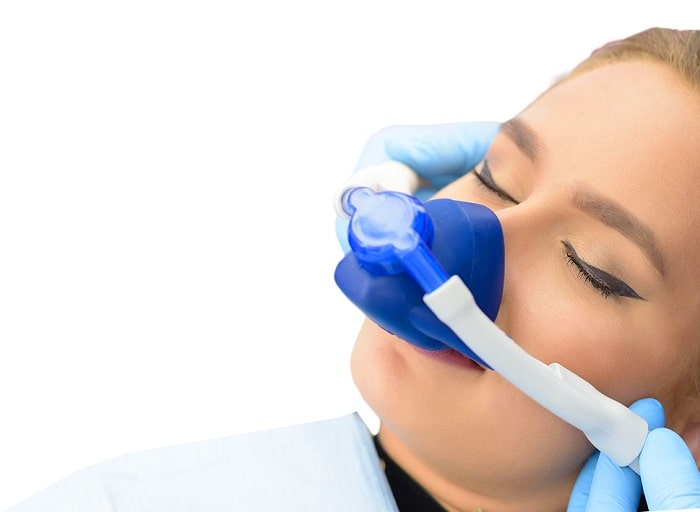
Nitrous oxide, more commonly known as laughing gas, is used to relax patients during dental procedures. You'll be conscious while taking laughing gas, but because it's a gas, it wears off very quickly once you stop breathing it in. Patients who only receive laughing gas as a sedative are often allowed to drive themselves home after a procedure.
When you receive laughing gas, the dentist gives you a nose apparatus through which you breathe the gas. The effects are very mild, and you'll start to feel the gas very quickly, sometimes as soon as 30 seconds after you start breathing it in. Some patients relax enough with nitrous oxide and do not require another form of sedation. Other patients need laughing gas on top of oral sedation.
Oral Sedation
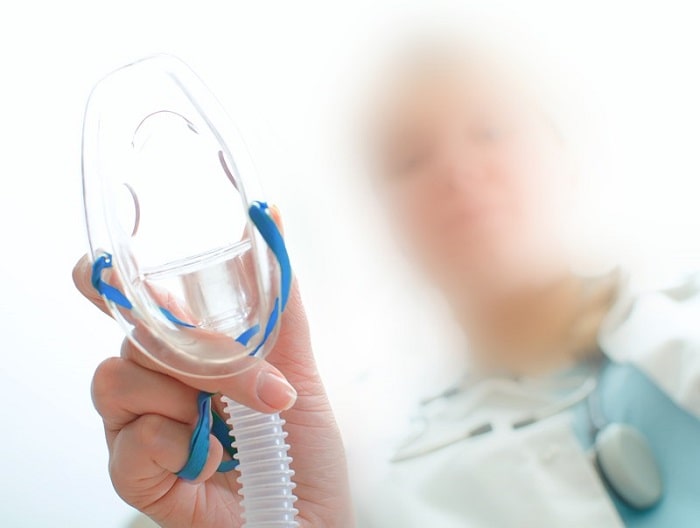
Oral sedation, also called "conscious sedation," involves you taking a prescribed dose of sedative before your procedure. Depending on your case, you may take one pill the night before, and one pill an hour before you have the procedure, or otherwise as directed by your dentist or doctor. This type of sedation leaves you awake for the procedure, but significantly relaxes you. Patients who have higher levels of anxiety often benefit from this type of dentistry.
Though you're awake during your procedure, most patients remember either very little or nothing at all of the appointment after it's happened. Depending on your case, while you're under oral sedation, you may be hooked up to equipment that monitors your heart rate, blood pressure, and breathing, or you may not require that kind of monitoring. It depends on factors which your dentist will determine. The sedative will leave you feeling sleepy, but by the next day all the effects will have worn off. You'll need a ride home from the dentist, though, so plan with a friend or family member in advance.
IV Sedation
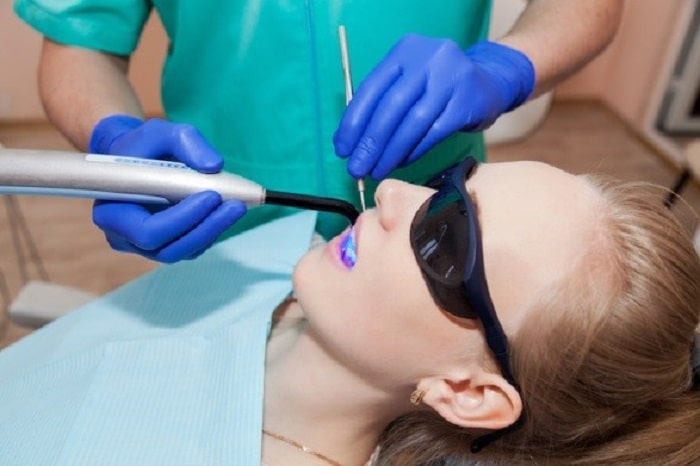
IV sedation has a few variations: the first is what's known as "twilight," where you're conscious, but not very aware of your surroundings. Twilight IV sedation makes you feel sleepy, and you may not remember any of the procedure once it's over. However, you are not unconscious, and if the dentist needs to wake you up, it's possible.
The other option is general anesthesia, which is relatively uncommon as far as sleep dentistry goes. Only patients who need significant oral surgery, or who are resistant to other types of sedation, will need general anesthesia. With general anesthesia, you're totally unconscious. This kind of sedation needs to happen in a hospital or a specialized clinic with either a nurse anesthetist or an anesthesiologist administering the sedative and monitoring your vital signs.
General Anesthesia and Deep Sedation
For heavy sedation, anesthesia makes the patient completely unconscious. The patient will not be capable of waking up during the procedure. The medicine has to either wear off on its own, or other medication needs to be administered to reverse the effects of the sedation.
The good news is that if you are having a dental procedure, you don't have to suffer. Depending on what you are having done, the right sedation method can allow you to sit back and relax. Your dentist can discuss the pros and cons of sedation and help you come up with an effective sedation method with minimal side effects and maximum comfort.
Intranasal conscious sedation
This involves a squirt of a concentrated form of a sedative medicine up your nose. It can sting a little and may make you sneeze. Once you are relaxed, dentists may need to give you more medicine, through a vein in your arm or hand. This will produce a deeper sedation. Dentists use this method for people who are needle phobic (extremely scared of injections) and for people with special needs who cannot stay still for intravenous conscious sedation.
Sedation options for children
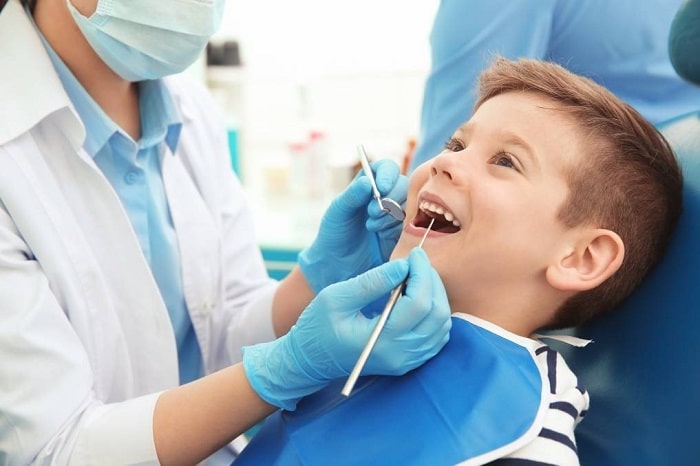
Nitrous Oxide
If you're an anxious patient yourself, you might already be familiar with nitrous oxide (commonly called laughing gas) in the dentist's office—but did you know children can experience the relaxing lightness that comes with breathing it in, too? It's very common in pediatric practices.
Nitrous oxide is very safe and mild, and your child can wear a "space mask" that lets them inhale it (along with oxygen) throughout the duration of their treatment. The effects kick in quickly, and when they're finished, breathing pure oxygen will clear any remaining effects within minutes.
- Nitrous oxide rarely has side effects, but some kids may experience minor nausea.
- To decrease the chance of side effects, have your child eat very lightly before treatment.
- Your child will remain conscious & able to respond while breathing nitrous oxide.
- Nitrous oxide helps reduce pain through relaxing your child.
General Anesthesia
If your child is very nervous about dental treatment and their treatment plan is a bit more extensive, your child's dentist can arrange for them to sleep through procedures with general anesthesia.
If your child is under general anesthesia, rest assured they'll be under constant monitoring throughout their care. Dentists will also determine whether they're a good candidate for General Anesthesia after a medical history evaluation that includes whether they have any conditions or take medications that make it unsuitable.
- Children are free to bring a comfort item, like a stuffed animal or blankie.
- Sedation can help children that have trouble staying still or have sensitive gag reflexes.
- If your child is very nervous and cannot tolerate dental treatment in the office, putting them to sleep may be the best option to successfully complete the procedure and avoid a "bad experience." As much as possible, we want the children to enjoy coming to the dentist!
FAQ
What Kind of Sedation Can Dentists Give?
Almost all dentists can give you laughing gas or prescribe you oral sedation pills. More dentists are becoming certified in offering the "twilight" type of IV sedation. However, to give any sort of deep sedation or general anesthesia, a dentist needs to complete a special program about deep sedation, first. Some dentists will work with a dental anesthesiologist, who has the training to safely give IV sedation.
Do I Need Sedation Dentistry?
Talk to your dentist about your fears and concerns before your appointment for dental work. Your dentist will recommend the type of sedation that will help in your specific case. Sometimes patients who have sensitive nerves or small mouths need sedation, simply because procedures cause more pain and discomfort in these patients. Other patients need sedation to overcome anxieties and fears associated with the dentist or with medical procedures.
What are the benefits of sedation?
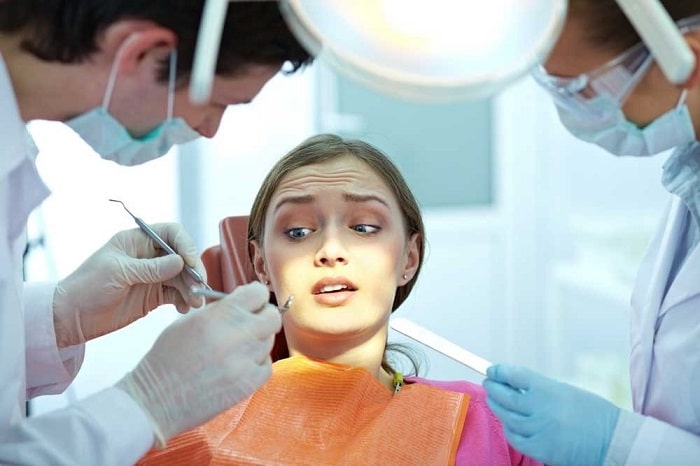
Conscious sedation will help you cope with dental treatment and lower your anxiety. Even people who do not feel anxious about dental treatment choose to have conscious sedation for uncomfortable procedures such as extractions(link with tooth extraction) (having teeth removed).
What are the risks?
Conscious sedation using gas and air is very safe. You may feel dizzy or light headed at the end of treatment but this should only last a few minutes. Your dentist will give you pure oxygen to breathe at the end of treatment to help prevent this. Intravenous sedation and intranasal sedation can slow down your breathing. Your dentist overcome this by monitoring you carefully, so he or she can give you oxygen if you need it. You may have some bruising to your hand or arm after the injection, but this should heal up in a few days.
Can You Eat Before Or After Sedation Dentistry?
Many patients wonder about the rules surrounding eating if they are having sedation dentistry. It's very important to pay attention to your dentist's rules on eating, as this can affect your procedure, or even make the sedation less effective. The rules about eating before and after sedation dentistry vary depending on the type of sedation used.
Here are the common types of sedation used, and their requirements about eating before and after:
- Nitrous Oxide: This is the mildest form of sedation. If you are given nitrous oxide, you may feel nauseous so it's recommended you don't eat for at least a few hours before the procedure. After receiving nitrous oxide, there are no dietary restrictions and you can eat as soon as you feel able.
- Oral sedation: This will make you feel moderately to very drowsy. You should not eat anything for six hours before your appointment, unless told otherwise by your dentist. After the procedure, it's important to stay hydrated by drinking lots of water. When you can eat afterwards depends on the procedure and type of sedation, so ask your dentist.
- IV sedation: This is given through an intravenous drip, which allows the dentist to control the amount of sedation. This must be performed on an empty stomach, and nothing should be eaten for at least six hours before the procedure.
- Deep sedation and General Anesthesia: During deep sedation, the patient will be totally unconscious, and will only awake once the effects of the anesthesia wear off. Similarly to IV sedation, you shouldn't eat for at least six hours before your appointment.
yelvertonwhous1972.blogspot.com
Source: https://www.missionimplantcenter.com/dental-sedation-options-laughing-gas-oral-sedation-iv/
0 Response to "Denist Gives Funny Gas to Patient Then Takes Her Xloths Off"
Publicar un comentario